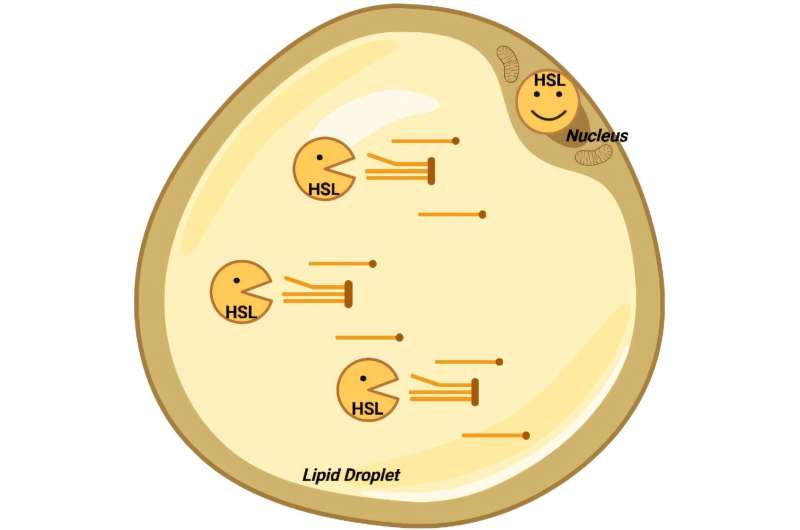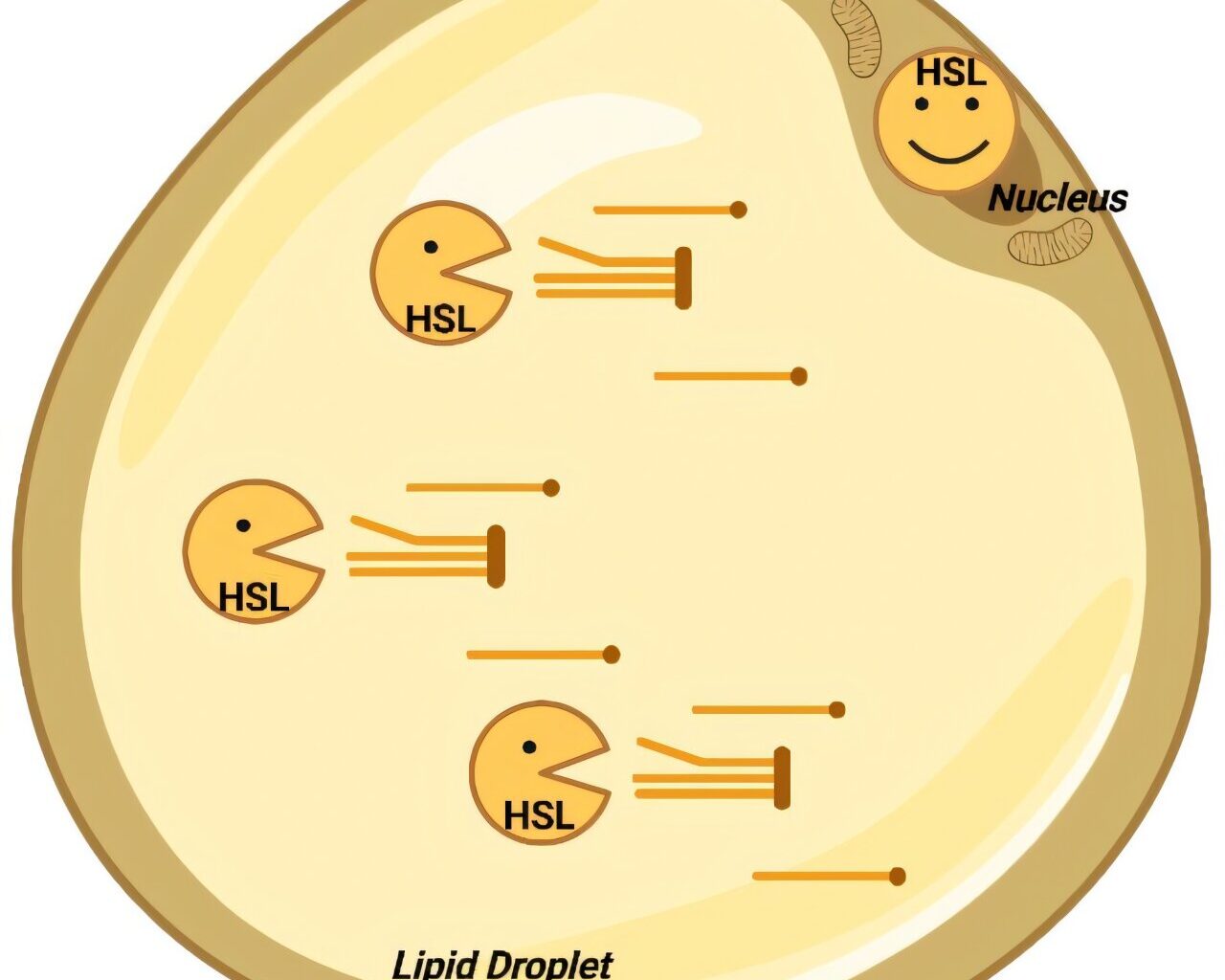
HSL contributes to the mobilization of fats stored in the lipid droplet. In the nucleus, HSL ensures the proper functioning of the adipocyte. Credit: I2MC, 2025. Created in https://BioRender.com
Scientists have known hormone-sensitive lipase (HSL) as the enzyme that releases energy stored in our fat. Yet patients born without this protein do not become obese: on the contrary, they lose their adipose tissue, developing lipodystrophy with severe metabolic complications.
A team from the Institute of Metabolic and Cardiovascular Diseases (I2MC, Inserm/Université de Toulouse) has just solved this puzzle by discovering that HSL plays a second, unsuspected role in the nucleus of fat cells. The study is published online in Cell Metabolism.
Our fat cells, called adipocytes, do more than just store extra weight. They play a key role in managing the body’s energy.
Adipocytes accumulate fat in the form of lipid droplets that the body can use when needed—for example, during fasting periods between meals. To do this, the body uses the HSL protein like a kind of switch. When energy is lacking, HSL is activated by hormones such as adrenaline and releases fat to fuel various organs.
In the absence of HSL, one might assume that the energy tap is shut off and that fat would inevitably accumulate. Paradoxically, however, studies in mice and in patients with mutations in the HSL gene show that this does not lead to obesity with excess fat. Quite the opposite happens: the absence of this protein causes a reduction in fat mass, a pathological condition known as lipodystrophy.
Obesity and lipodystrophy, though seemingly opposite, share a common point: in both cases, adipocytes malfunction, leading to similar metabolic and cardiovascular complications.
To understand this peculiarity, the research team led by Dominique Langin, professor at the University of Toulouse within the I2MC, noticed that HSL was located in an unexpected area.
In adipocytes, the protein is known to be on the surface of lipid droplets, where it acts as an enzyme breaking down fat. But the study reveals that it is also present in the nucleus of fat cells.
“In the nucleus of adipocytes, HSL is able to associate with many other proteins and take part in a program that maintains an optimal amount of adipose tissue and keeps adipocytes ‘healthy,'” explains Jérémy Dufau, co-author of the study, who defended his doctoral thesis on this subject.
Moreover, the study shows that the amount of HSL in the nucleus is finely regulated. Adrenaline, which activates the enzyme on the lipid droplet, also promotes its exit from the nucleus. This is what happens during fasting. In a pathological context, the amount of nuclear HSL is increased in obese mice.
“HSL has been known since the 1960s as a fat-mobilizing enzyme. But we now know that it also plays an essential role in the nucleus of adipocytes, where it helps maintain healthy adipose tissue,” concludes Langin.
This new role explains the lipodystrophy observed in patients lacking HSL and opens avenues for a better understanding of metabolic diseases such as obesity and its complications.
This discovery comes at a timely moment. Overweight and obesity affect one in two adults in France. Worldwide, two and a half billion people are affected. Obesity increases the risk of many diseases, including diabetes and heart disease, and impairs quality of life.
Continued research is essential to improve prevention and patient care.
More information:
Nuclear Hormone-sensitive Lipase Regulates Adipose Tissue Mass and Adipocyte Metabolism, Cell Metabolism (2025). DOI: 10.1016/j.cmet.2025.09.014. www.cell.com/cell-metabolism/f … 1550-4131(25)00433-4
Provided by
Université de Toulouse
Citation:
Discovery shakes 60 years of certainty about fat metabolism (2025, October 23)
retrieved 23 October 2025
from https://medicalxpress.com/news/2025-10-discovery-years-certainty-fat-metabolism.html
This document is subject to copyright. Apart from any fair dealing for the purpose of private study or research, no
part may be reproduced without the written permission. The content is provided for information purposes only.
